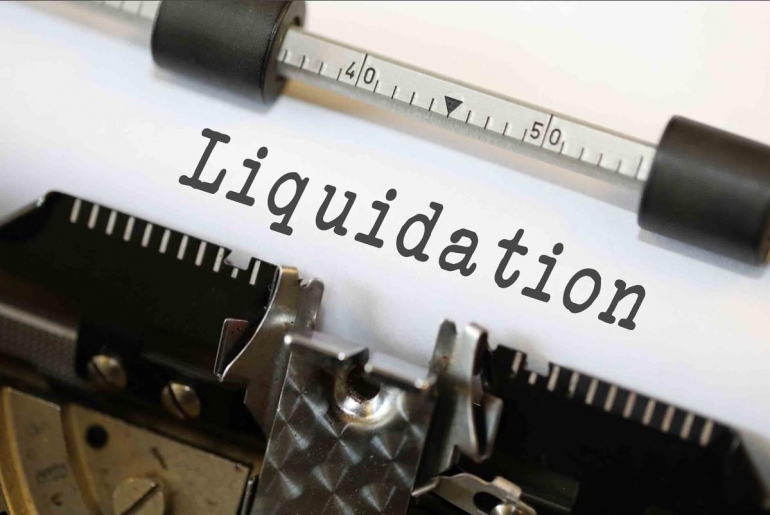When a company stops trading and all its assets are liquidated and turned into cash in order to pay back the creditors and the directors voluntary choose to bring their business down, this process is called a CLV. The shareholders are told by the directors that the company isn’t viable anymore and must stop trading. A licensed insolvency practitioner is then hired to call a creditor’s meeting as soon as possible where creditors vote to appoint a liquidator. Liquidation can sometimes end that creditor’s worry that keeps you up at night and help you get on with your life.
How to determine when a company is insolvent?
The cash flow test and the balance sheet test are the two main ways on how to determine the company has become insolvent. If a company can’t afford to meet its liabilities and falls due then it is cash flow insolvent and on the other hand, if a company has liabilities that outweigh its assets then its balance sheet insolvent. No further credit should be obtained and you should be really careful when you’re making payments to creditors if you don’t have the funds to pay back everyone you owe. Avoid paying one creditor to the detriment of another because it may be classed as making a preference payment and you may be liable for repayment of these sums in a subsequent liquidation. Trading while knowing your company is insolvent is extremely dangerous and you can be held personally liable. If you’re in this situation then you should probably seek help from a licensed insolvency practitioner who will talk you through the options that are available for your company. But if you don’t want to find yourself in this situation a good idea would be to build a financial model of your cash flow. This way you will always know exactly where your finances stand. Financial modeling can be used in many different situations during your companies lifetime, all of them are diligently explained in this Wall Street Prep article.
Can a CVL help?
There is a wide range of formal insolvency procedures like administration and CVAs, which can sometimes help save struggling companies but in some cases, a business is beyond rescue and the best way is to go for liquidation. This action can make a pathway for directors to move on and most importantly it can allow creditors to recover as much many as possible. A CVL will deal with your company’s depths and will deliver your company to a close. Although asset realization will be maximized to allow a return to creditors, sometimes there can be a shortfall to creditors but this will be written off when the company is liquidated. Also if you have signed a personal guarantee you will be responsible for paying the outstanding amount of this borrowing and you won’t be written off.
How do I place my company into a CVL?
The only way you can start a Creditor’s Voluntary liquidation is under the guidance of a licensed
insolvency practitioner. These professionals can give you realistic and practical advice you need when your company starts going downhill and it is advised to speak to one at the earliest signs of insolvency. They will present various options that are possible for you and your company and they include rescue and restructuring procedures like Administration or a CVA. If your business is beyond recovery and if it’s the will of the directors and shareholders to close the company then a CVL is probably inevitable.
Board meeting
Once the directors have consulted with a licensed Insolvency Practitioner and have decided to start the liquidation process then it is time to hold a meeting of the board of directors. In the case of a sole director, a document of the sole director’s decision is necessary. Later on, this will bring together a general meeting of shareholders and a decision will be made by the creditors to place the company into liquidation. The insolvency practitioner is then instructed by the directors to oversee the liquidation and to outline the important information in order to begin the process of liquidation.
Shareholders and creditors
If the decision to begin the liquidation process has been made then shareholders and creditors must be informed of the general meeting and decision date. Before the effective date of the liquidation is set creditors must be presented with an Estimated Statement of affairs of the company. This document will show the financial position of the company and will detail its assets and liabilities. Also, a report must be made by the licensed Insolvency Practitioner which will provide a short trading history that will detail financial movements between the dates of the last accounts and the date of liquidation. This report and statement must be available to creditors before the decision date.
Liquidation starts
Decision Date of creditors and the general meeting of shareholders will probably happen on the same day and in order to start the liquidation, 75% of shareholders must resolve to wind up the company. After this, there is no more need for a physical creditors meeting except if it is requested by 10% creditors in number, creditors in value or 10 creditors.
If your company is in distress and you have a feeling that it can’t be rescued then take these necessary steps and maybe there is a chance for rescue. Don’t just wait and let the ship sink and you along with it. When you liquidate you have a chance to move on.





